Japan: Day 2 – Yoichi/Story of Nikka – Part III

The whisky distillery appears unassumingly as you drive through the working-class town of Yoichi. One minute you're looking at some basic homes and businesses, the next minute you see the compound as you drive around the bend in the road.
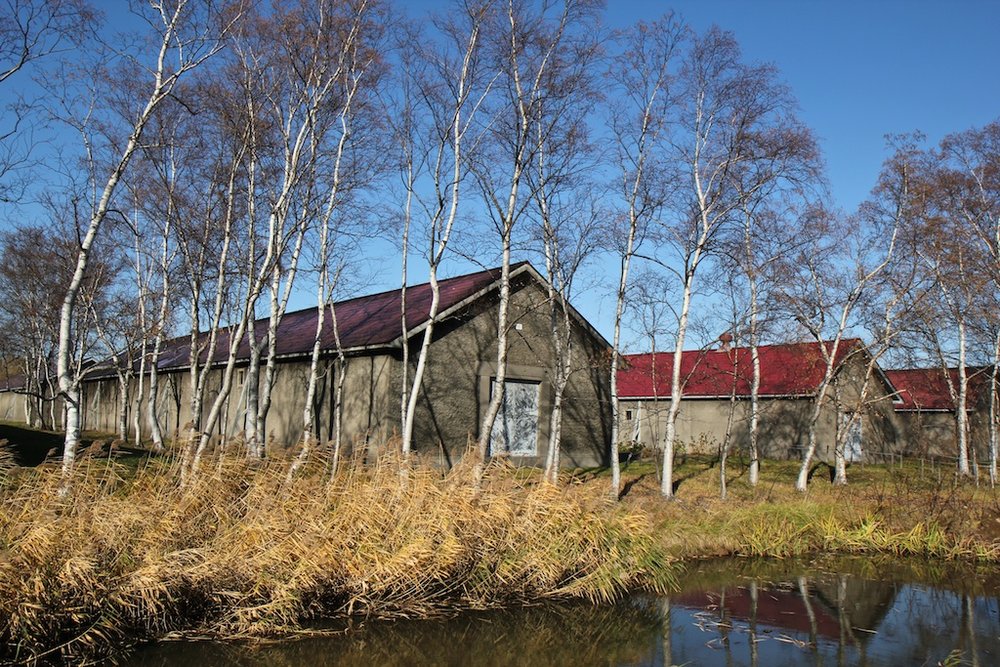
Beyond the birch trees and the drainage from the Yoichi river are the warehouses. We passed the distillery on arrival and entered through the back parking lot. There is a more formal entrance for pedestrians located right on the main Yoichi drag.
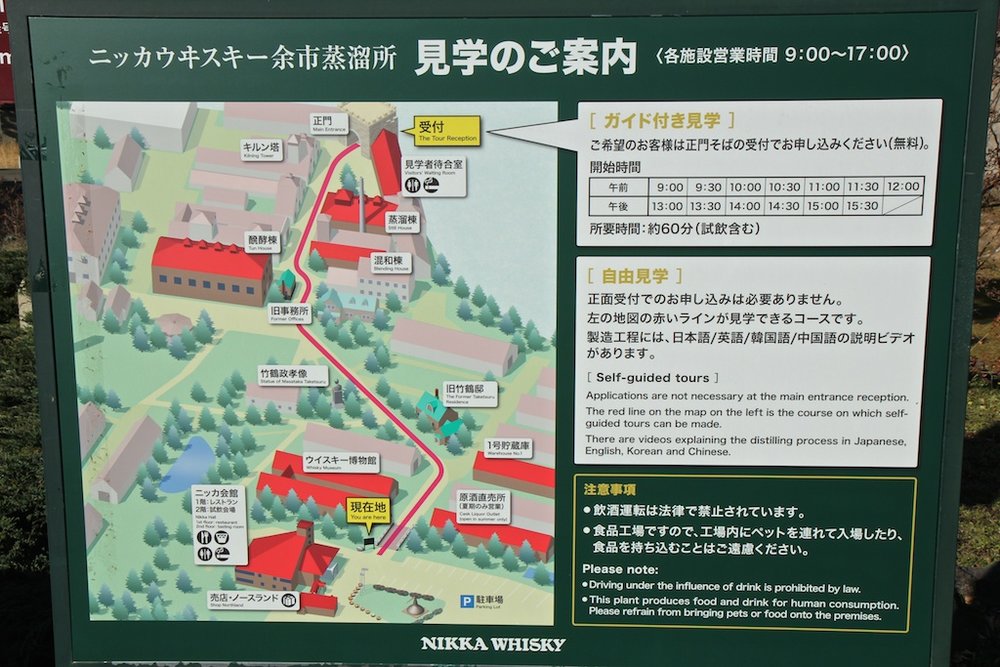
What's immediately striking about both Kavalan and Yoichi is that they're not just industrial whisky facilities. They're gigantic campuses with a multitude of different buildings and faculties.
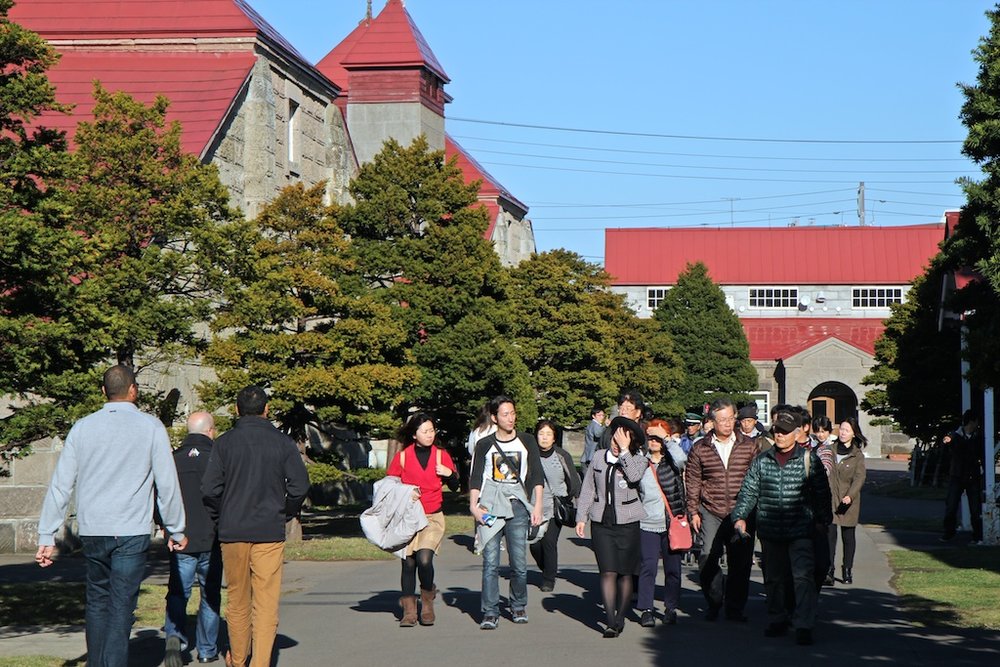
With the fall colors abound and the groups of visitors walking to and fro, we could have been at Amherst College or some other quaint New England university. The quad was packed with tourists snapping photos and toting gift shop purchases. The popularity of the new "Massan & Ellie" soap opera has really increased the tourism at Yoichi, according to our guide Naoki. It's at the point now where Nikka has stopped selling single cask Yoichi special editions at the distillery due to an increase in bottle flippers. Folks from all around Asia have been buying up the limited releases and selling them on the secondary market in places like Taiwan and China, where the show has also been a success.
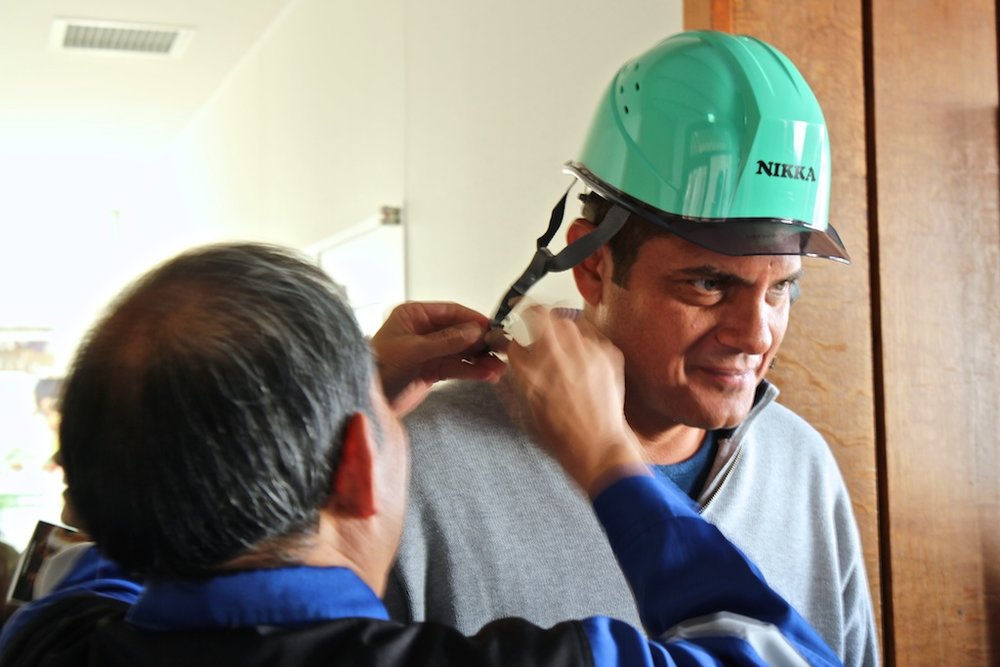
Since we were going on a special industry tour, we needed to wear Nikka hardhats—both to protect our heads and to distinguish ourselves from the other guests. Most people in Japan, however, aren't as large as our friend Maurice, so he needed a bit of assistance.
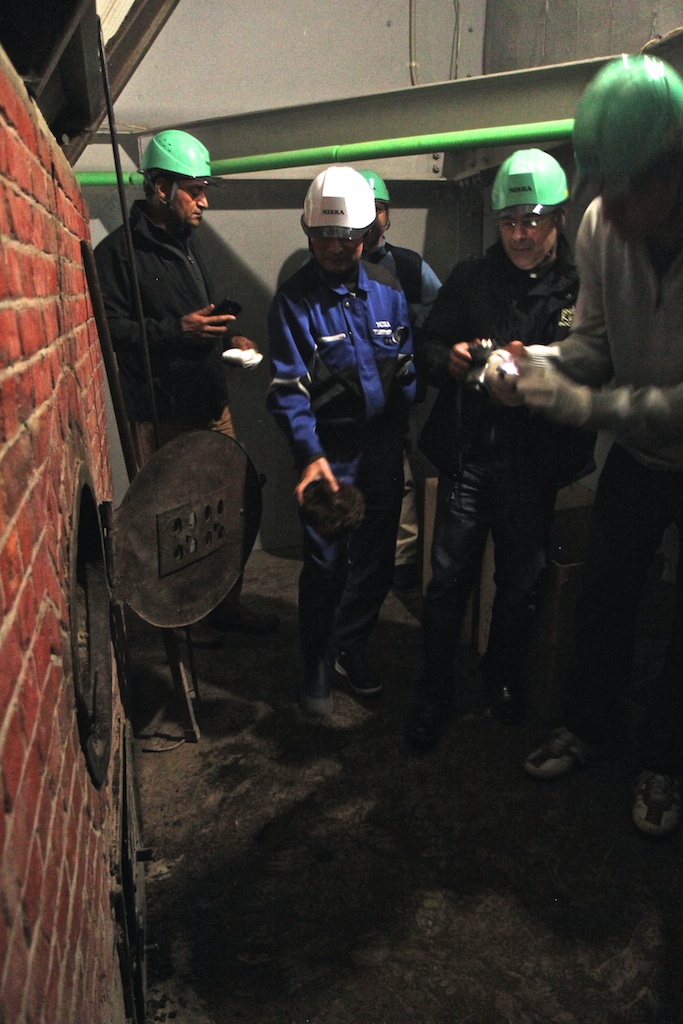
The first stop on our tour was the old kiln where Yoichi once used peat to dry their barley. Today most of their barley comes already peated from Scotland, but they still keep the kiln functioning to show guests how the process works. History and tradition are very important to Nikka, which is why even parts of the distillery no longer used have been kept in prestine condition. I would say a good half of the Yoichi campus is utilized as a museum rather than for actual whisky production.
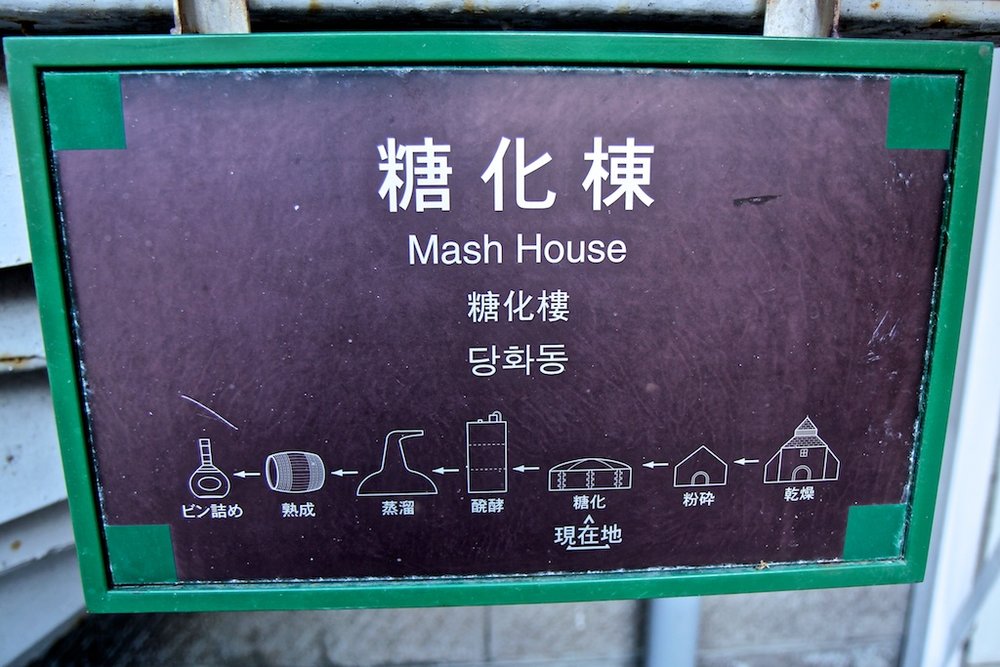
One of the coolest and most amusing parts of Japan is the plethora of user-friendly diagrams to help those not fluent in the local dialect. I thought this basic overview of whisky production was outstanding: kiln, to mill, to mash (this building, as underlined), to fermenter, to still, to barrel, and finally to bottle. What more do you need to know?
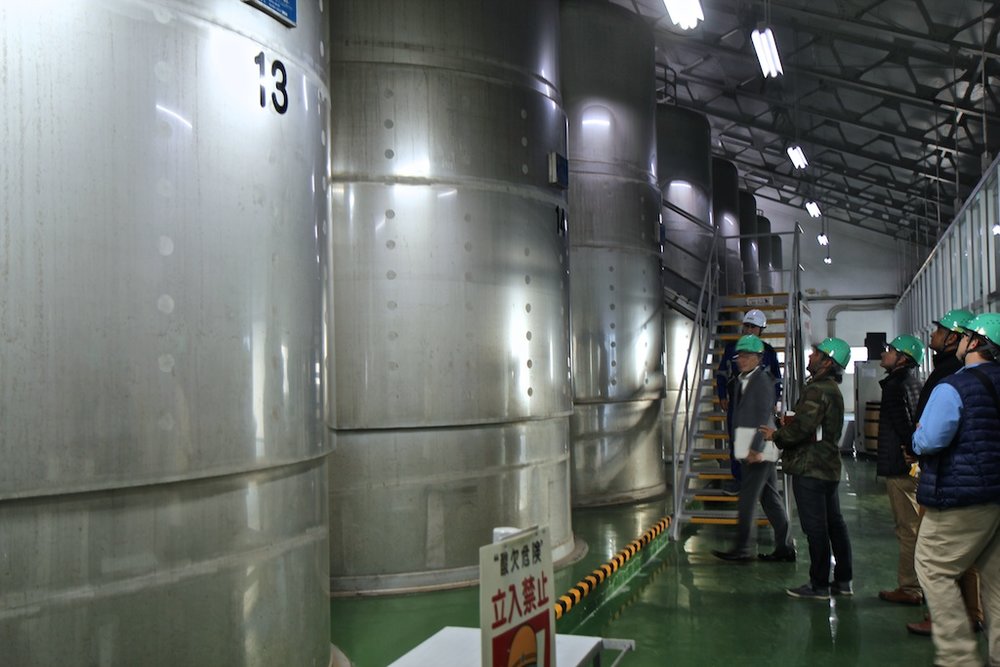
The fermentation tanks are tall, vertical, two-story vessels that sometimes run a process of 96 hours for each batch. The important fact we quickly learned about Yoichi is that they don't make one basic single malt spirit. They make peated whisky, they make heavy whisky, they make lighter whisky, and they'll use a number of different processes to get to each flavor. Naoki told us that between various yeast strains, mash bills, fermentation times, distillation methods, maturation times, and barrel selections, Yoichi produces about 3,000 different types of single malt whisky. The permutations for blending those whiskies into different expressions are endless. That capability was important to Masataka Taketsuru.
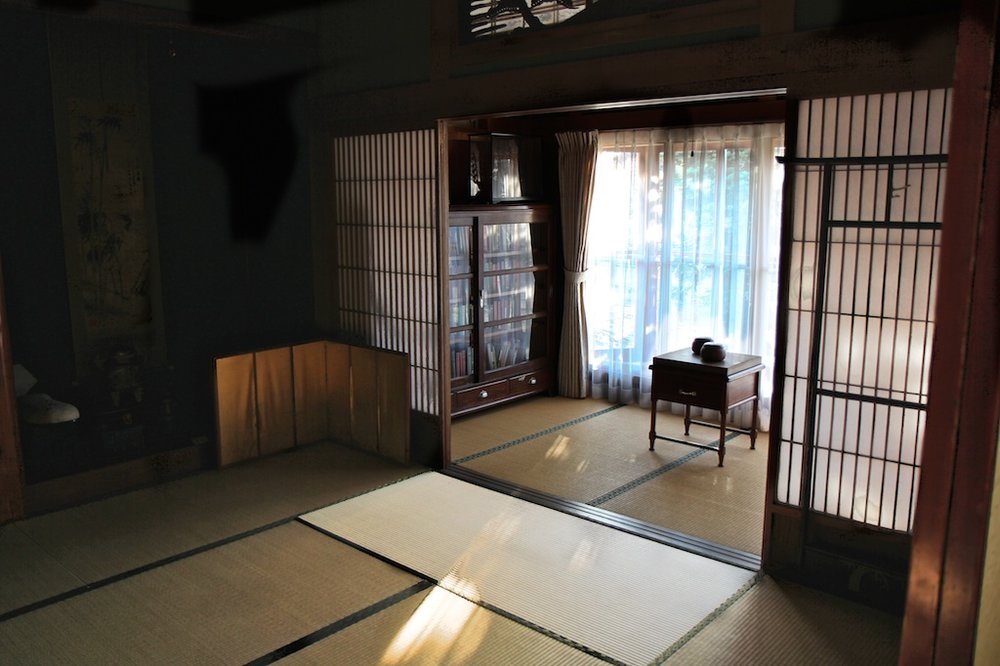
Perhaps the most incredibly-curated part of the Yoichi tour, however, is the presentation of Taketsuru's old house; located in the center of the campus and kept with all his original furniture and decor. The entire dwelling is a fusion of Masataka's traditional Japanese culture with Rita's Scottish influence; hence the classic Japanese bedroom with modern Western glass windows.
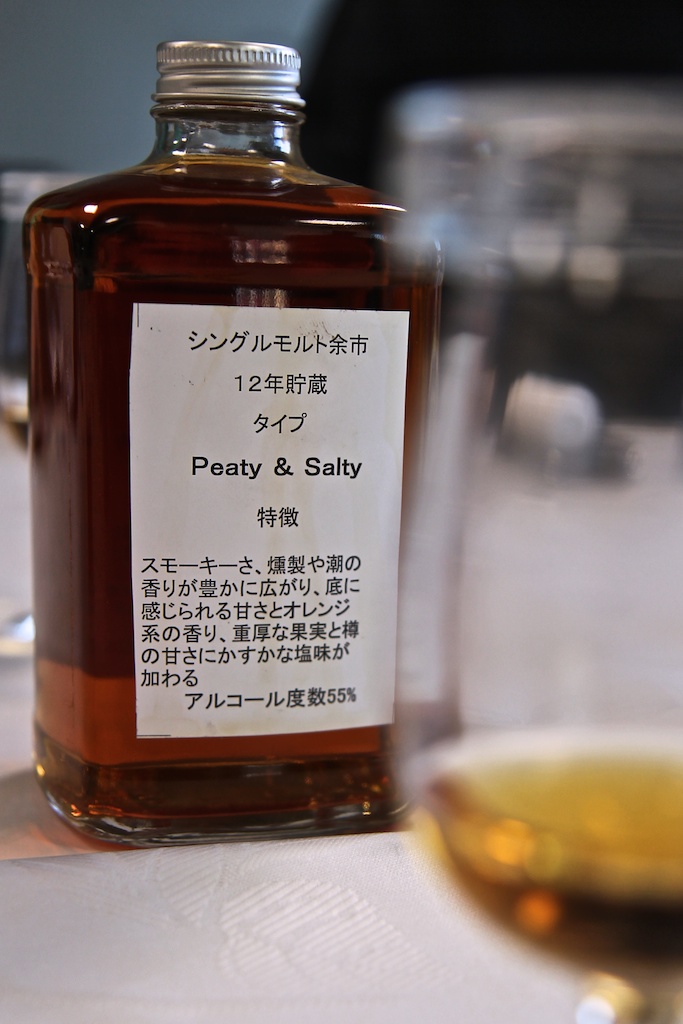
After finishing our tour it was time to finally taste some whisky. Yoichi distillery has these wonderful 12 year old expressions named after specific flavor profiles to help highlight their capabilities as a producer. Along with "Peaty & Salty", there's "Woody & Vanillic" as well as "Sherried & Sweet".
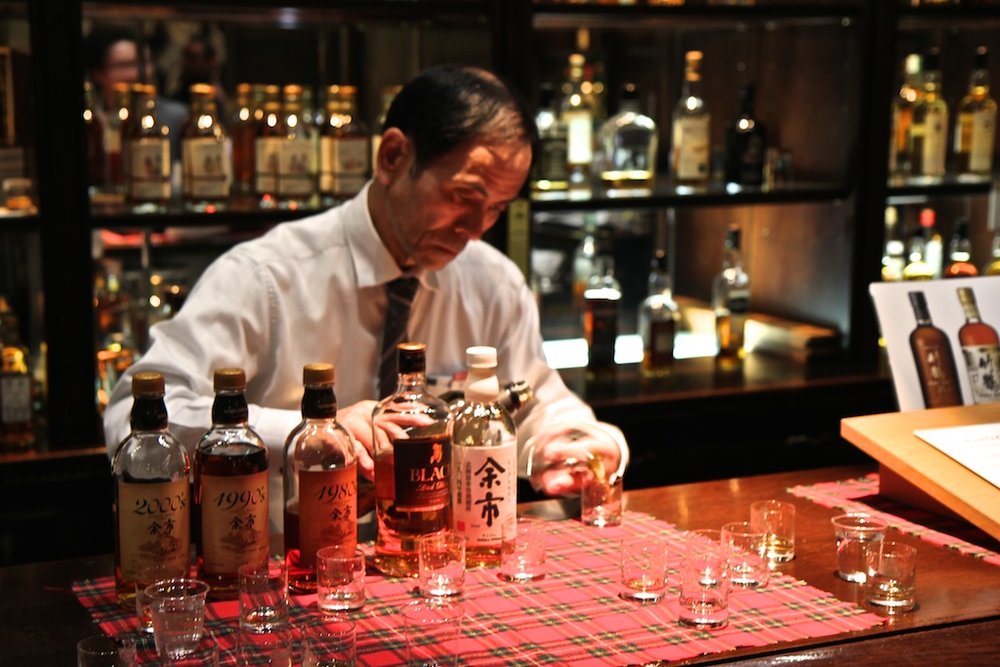
In the Yoichi tasting bar you can finally wrap your lips around an even-larger array of expressions, like the decade marriages that utilize only barrels from the 80s, 90s, and 2000s. It took us quite a while to leave this particular room.
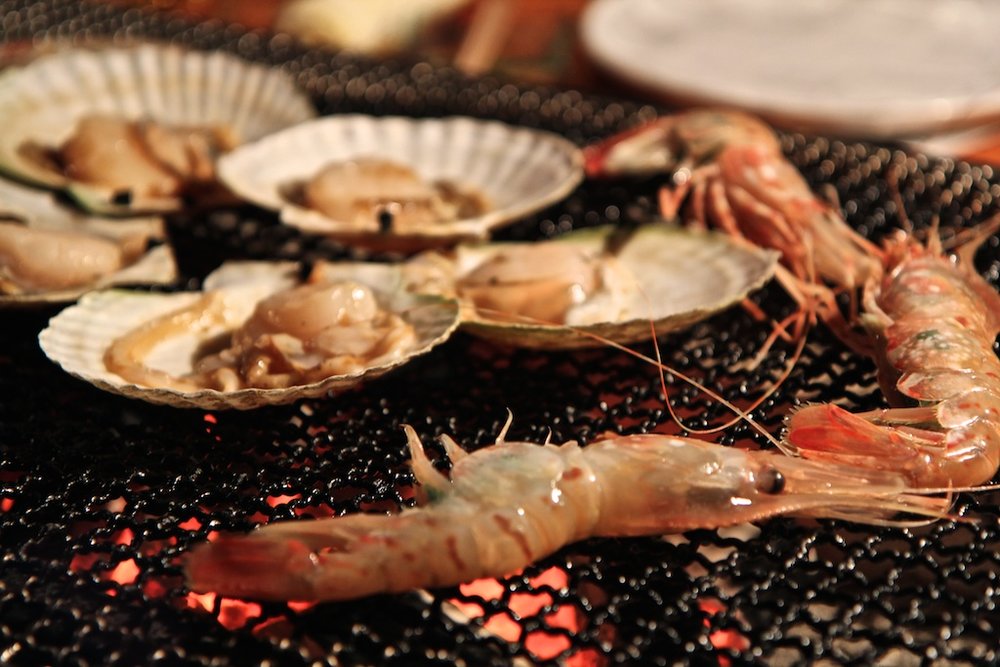
We did eventually leave Yoichi distillery in complete awe; excited, enthused, and hungry—literally! That's when Naoki took us to a traditional Hokkaido seafood barbecue. Japan's northern island is known for having the country's freshest fare, so we needed to take advantage of our time here. Never have I had seafood that tasted this good, and most-likely never will I again. Between the grilled scallops last night and the incredible sushi display we had for lunch, I've been drunk on unbelievable fish flavor.
We're off to Sendai this morning and the Miyagikyo distillery located high in the nearby mountains. When Taketsuru built his second whisky distillery in 1969, ten years before his death, he wanted it to be the polar opposite of the Yoichi site. I'll be back to explain all those differences later today.
-David Driscoll
